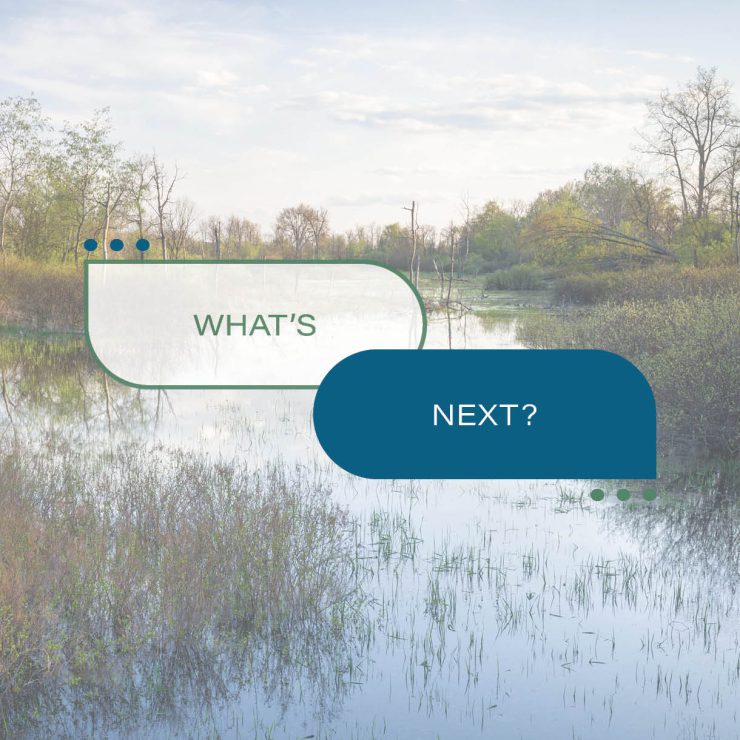By: Andrew Der, CEP
The blog post earlier this week gave an overview of the background on the uncertainties surrounding the Clean Water Rule and what new developments have occurred in 2022 and into 2023. But how does this relate to the work being done by Straughan in Maryland and what is on the horizon? Read on to learn more.
WUS rules and Maryland projects
The 2023 outcome of these processes can also affect other corresponding federal and state processes keying off these definitions including CWA Section 401 state Water Quality Certification (WQC) administered by the Maryland Department of the Environment (MDE) which goes with – and can veto – a COE 404 permit. A WQC certifies that any 404 permit complies with the states’ water quality standards, both narrative and numerical.
WUS definitions can also affect CWA Section 402 Phase I and II National Pollutant Discharge Elimination System (NPDES) stormwater General Construction and Municipal Separate Storm Sewer System (MS4) programmatic permitting administered by the MDE – and also the concurrent erosion and sediment control plan approval as well as final Stormwater Pollution Prevention Plans (SWPPP), if applicable (I should have given an abbreviation warning at the beginning!)
They all reference and regulate WUS and what may get lost in the shuffle is that regardless of how WUS are defined, Maryland and the localities’ laws and regulations generically exceed them, while preserving preferential state rights as intended.
Anyone working on projects associated with WUS limits in Maryland will find that MDE additionally regulates the nontidal 100-year floodplain, nontidal 25-foot wetland buffer, 100-foot buffer to state-designated rare and sensitive waters and wetlands, and isolated wetlands that are not federally regulated.
Further, the Maryland Department of Natural Resources’ (DNR) groundbreaking Chesapeake Bay Critical Area law places, by delegation of local ordinance, its own additional 100-foot buffer to tidal waters, including wetlands, via delegated local planning overlays within 1000 feet from tidal waters.
And outside of the Critical Area, Maryland counties administer the DNR Maryland Forest Conservation Act by local ordinance that places a (usually) 100-foot buffer to delineated waters, further expanded by sensitive habitat, steep slopes, and erodible soils, as part of their local Natural Resources Inventory/Forest Stand Delineation (NRI/FSD) process even before any consideration of stormwater management.
What’s next?
While WUS have zero buffers from federal agencies, what may or may not change in the future is the extent of jurisdictional waters on a site level that may be subject to these additional state and local features. Either way, Maryland has got it covered regardless of what the final federal rules are and our prominent challenge and lowest hanging fruit continues to be compliance with the contemporary criteria already in place – and this is where our attention and efforts should focus the most.
Since other processes may key off of WUS limits by ripple effect (no pun intended), uniform federal rule-making is a good thing – and achieving consensus on what those are on the ground is the critical issue. In other words, how far up does it go and how wet does it have to be? That is key.
What that means for our industry and projects, is that we need to be – and are – aware in real time of these dynamic regulatory changes as they may affect projects on a site level regarding WUS limits and construction regulation differently at any given time. This will need proactive anticipation of the most effective approaches to compliance and project goals – and will directly affect how we delineate project-wide water resource features. Applications to both the COE and MDE will need to be prepared in a manner that is effective and efficient for both the regulated public as well as the regulatory agencies.
Clarified and uniform WUS definitions are welcome and predictability is something we all can agree is desperately needed, yet meanwhile, agencies, legislators, the potentially regulated public, and other stakeholders continue to clash over the clarity of water rules that may not be so clear.
Will the upcoming judicial branch Sackett ruling – or executive branch rule proposals – once again change anything in Maryland and surrounding states this year? Stay tuned.
